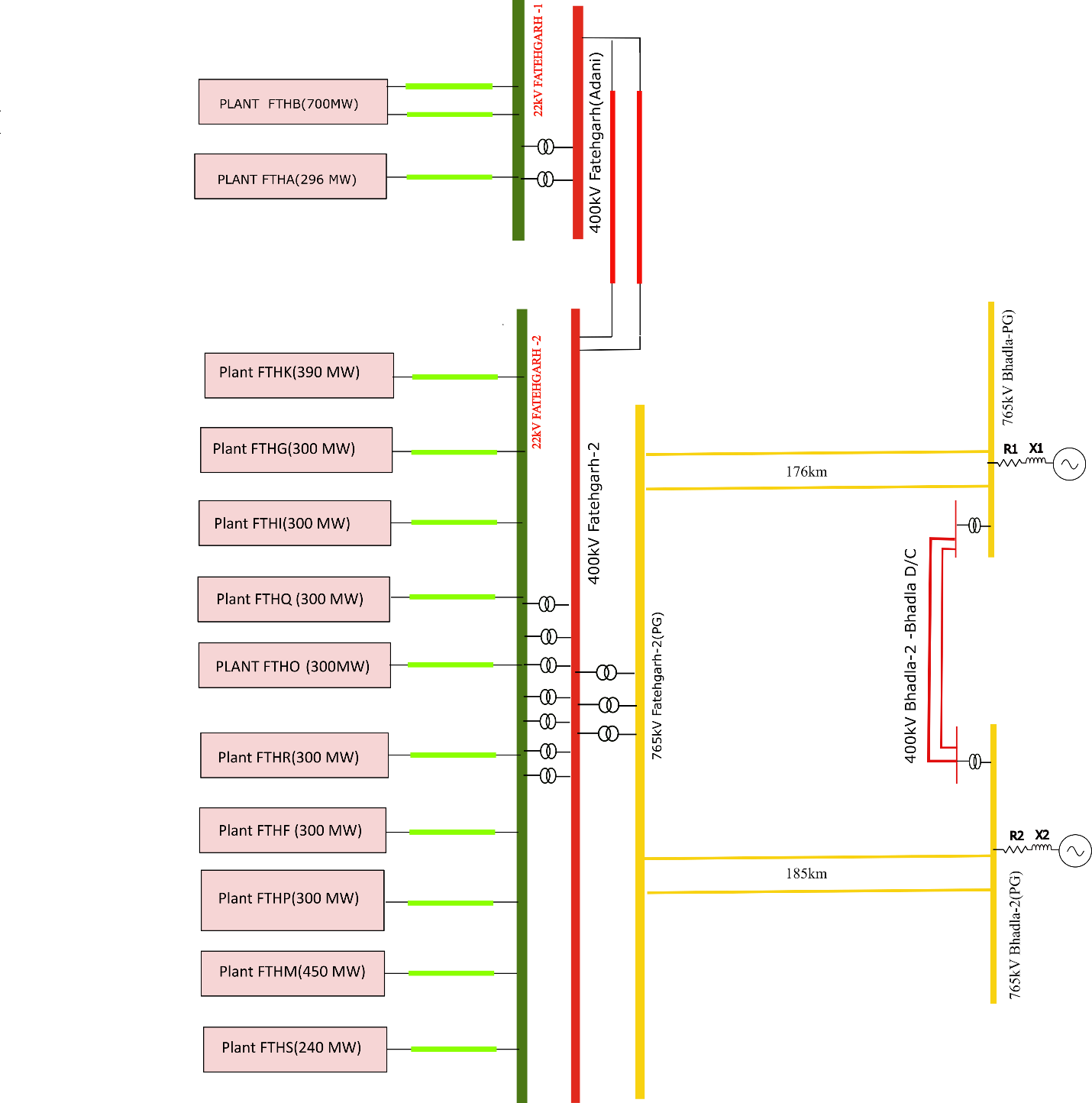Modeling of RE plants and RE integration studies

Fig 1. EMT model of a Solar plant [1]
The integration of renewable energy sources, particularly solar and wind power, has seen a significant increase in the Indian power system in recent years. While this shift towards green energy is essential, it also presents challenges that must be addressed to maintain system stability. As inverter-based resources become more prevalent, power systems encounter operational challenges such as generation loss events, low-frequency oscillations, and voltage instability.
Rajasthan stands out as one of the most renewable-rich states in India, where multiple large-capacity renewable energy plants, mainly PV solar, are being consolidated at a few pooling stations and are evacuated by long-distance 765kV transmission lines. Non-compliance of these renewable energy plants during Low Voltage Ride Through (LVRT) and High Voltage Ride Through (HVRT) events has led to grid disturbances, resulting in significant generation losses (upto 6-7 GW). The RE network also frequently experiences low-frequency oscillations and voltage instability issues. Similar incidents in RE pockets have been reported worldwide. For example, the power system disturbance in Texas on May 9, 2021, experienced a widespread reduction in solar photovoltaic (PV) power generation[2].
It is important that RE plants support gird during grid disturbances. Ensuring reliable planning and secure operation of power systems with inverter-based resources will require extensive large-scale simulation studies. In most countries, it is mandatory to submit the electromagnetic transient (EMT) and root mean square (RMS) models of the RE plant to the grid operator before connecting them to the grid. These models are used to check the compliance of RE plants with grid standards before permitting them to be integrated with the grid. Testing the accuracy of power system models is important as these models are used to develop large-scale networks of the system under consideration. The data captured during system disturbances is used to verify the accuracy of the dynamic models.

Fig 2. EMT study of Rajasthan Solar Park [1]
Some of the focus areas are
- Modelling of RE plants and compliance validation.
- Modelling of HVDC/FACTS devices
- Development of large scale EMT study network for analysis of grid events.
- Operation of RE parks with grid-forming operation and grid-following converters
Reference
| [1] |
Report on Events Involving Transmission Grid Connected Wind & Solar Power Plants,Grid India,2023 |
| [2] |
Odessa Disturbance. Texas Events: May 9, 2021 and June 26, 2021. Joint NERC and Texas RE Staff Report, September 2021 |